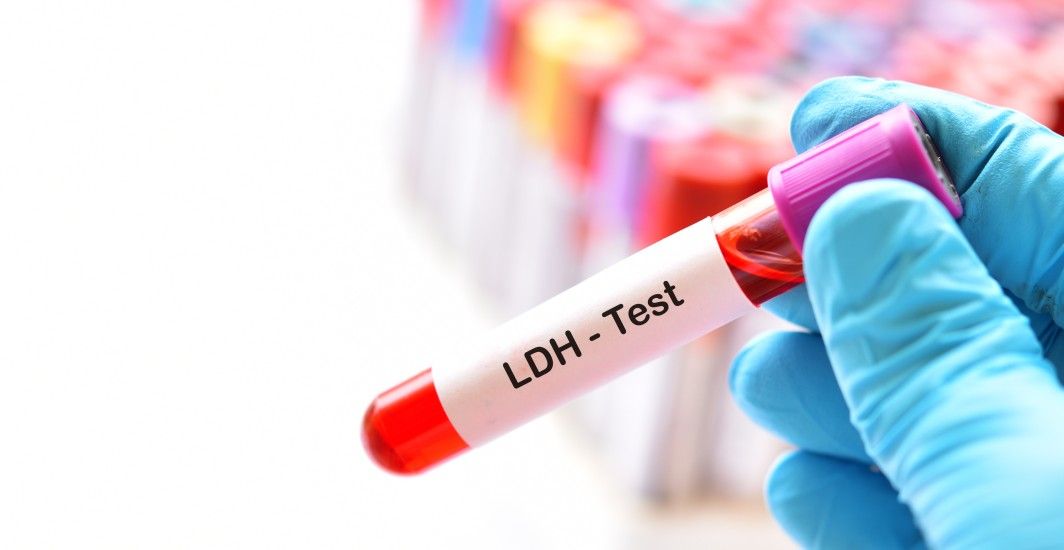General Health
Uric Acid Test: Purpose, Procedure, Range, and Results
6 min read
By Apollo 24|7, Published on - 14 February 2025
Share this article
0
0 like
.jpg?tr=q-80)
The uric acid test is an important diagnostic tool used to measure the levels of uric acid in the blood or urine. Uric acid is a waste product produced when the body breaks down purines that are substances found naturally in cells and in certain foods. While uric acid is typically dissolved in the blood and eliminated through the kidneys, excessive levels can lead to conditions such as gout and kidney stones. This article provides an in-depth look at the uric acid test, including its purpose, procedure, result interpretation, and clinical significance.
What is the Uric Acid Test?
The uric acid test measures the concentration of uric acid in the blood (serum uric acid test) or urine (urinary uric acid test). High levels of uric acid in the blood (hyperuricemia) can lead to gout, a form of arthritis, and may also increase the risk of kidney disease. The test helps doctors diagnose and monitor these conditions.
Purpose of the Uric Acid Test
Doctors order a uric acid test for several reasons, including:
- Diagnosing Gout: Gout is characterised by sudden and severe joint pain, redness, and swelling, often affecting the big toe. The test helps confirm if elevated uric acid levels are contributing to these symptoms.
- Monitoring Uric Acid Levels in Cancer Patients: Certain cancer treatments, such as chemotherapy, can cause a rapid breakdown of cells, leading to high uric acid levels. Monitoring these levels helps prevent complications like tumour lysis syndrome.
- Assessing Kidney Function: The test can help determine if high uric acid levels are causing kidney stones or contributing to kidney disease.
- Identifying Metabolic Disorders: Some metabolic conditions lead to abnormal purine metabolism, resulting in excessive uric acid production or poor excretion.
- Evaluating Dietary Impact: Dietary habits, including high consumption of red meat, seafood, alcohol, and sugary drinks, can affect uric acid levels. The test may be used to assess whether dietary changes are necessary.
Symptoms That May Require a Uric Acid Test
Your doctor may recommend a uric acid test if you experience any of the following symptoms:
- Severe joint pain and swelling, often in the big toe, ankle, or knee (indicative of gout)
- Kidney stone symptoms such as severe abdominal pain, blood in the urine, or difficulty urinating
- Unexplained fatigue, fever, or body aches associated with metabolic or kidney disorders
Types of Uric Acid Tests
The uric acid test can be conducted using either blood or urine samples:
- Serum Uric Acid Test: Measures the amount of uric acid in the blood.
- Urinary Uric Acid Test: Measures the amount of uric acid excreted in urine over a 24-hour period.
Procedure of the Uric Acid Test
Uric acid test can be conducted using either a blood sample or a urine sample. Below is a detailed explanation of both procedures:
1. Blood Test Procedure
- A healthcare professional or a phlebotomist will begin by cleansing the skin on the arm with an antiseptic to prevent infection.
- A sterile needle is carefully inserted into a vein, usually in the arm, to draw a small amount of blood.
- The collected blood sample is transferred into a vial or test tube.
- Once the required sample is obtained, the needle is removed, and a small bandage is applied to the site to prevent bleeding.
- The blood sample is then sent to a laboratory for analysis, where the uric acid levels are measured.
- The procedure is quick, usually lasting only a few minutes, and typically causes minimal discomfort, though some individuals may experience slight bruising or soreness at the puncture site.
2. Urine Test Procedure
- A urine test for uric acid requires a 24-hour urine collection to obtain a more accurate measurement of uric acid excretion.
- On the first morning of the test, urinate normally and discard the initial sample. This ensures that the measurement starts with fresh urine.
- Collect all subsequent urine samples throughout the day and night in the provided sterile container.
- It is important to store the container in a cool place, such as a refrigerator or an ice pack, to preserve the integrity of the sample.
- Continue collecting urine until the same time the following morning to complete the 24-hour cycle.
- After the collection period, the sample is returned to the laboratory, where it is analysed to determine the concentration of uric acid in the urine.
3. Preparation for the Uric Acid Test
Unlike some medical tests that require fasting, a uric acid test does not require any special dietary restrictions beforehand. However, there are a few important considerations:
- No Fasting Required: You do not need to fast before undergoing a uric acid test, meaning you can eat and drink normally.
- Medication Disclosure: Certain medications and supplements can influence uric acid levels. It is essential to inform your doctor about any medications (e.g., aspirin, diuretics, or vitamin B-3) that you are taking. Your doctor may provide specific instructions regarding whether you need to adjust your medication schedule before the test.
- Dietary Considerations: Although not mandatory, avoiding purine- rich foods (such as red meat, shellfish, and alcohol) before the test may help prevent temporary spikes in uric acid levels.
Understanding Uric Acid Test Results
The results of the uric acid test are measured in milligrams per decilitre (mg/dL) or micromoles per litre (µmol/L). The normal ranges for uric acid levels are:
1. Interpreting High Uric Acid Levels
Elevated uric acid levels in the blood or urine may indicate:
- Gout: Excess uric acid crystallises in joints, causing painful inflammation.
- Kidney Stones: High uric acid can form crystals in the kidneys, leading to stone formation.
- Kidney Disease: The kidneys may struggle to filter out uric acid properly.
- Metabolic Disorders: Conditions like Lesch-Nyhan syndrome affect uric acid metabolism.
- Cancer or Cancer Treatments: Certain cancers and chemotherapy can cause excessive uric acid production.
- Dietary and Lifestyle Factors: High intake of purine-rich foods and alcohol can contribute to hyperuricemia.
2. Interpreting Low Uric Acid Levels
While less common, low uric acid levels may indicate:
- Kidney Disease: The kidneys may be over-filtering uric acid.
- Liver Disease: The liver may not be producing enough uric acid.
- Certain Medications: Drugs such as allopurinol and probenecid lower uric acid levels.
- Genetic Conditions: Rare genetic disorders can cause decreased uric acid production.
Comparing Uric Acid Test with Other Diagnostic Tests
The uric acid test is often used alongside other tests to confirm diagnoses:
- Synovial Fluid Analysis: Helps detect urate crystals in joint fluid for gout diagnosis.
- Kidney Function Tests: Assesses kidney performance in processing uric acid.
- Complete Metabolic Panel: Evaluates overall metabolic health.
Managing High Uric Acid Levels
If your uric acid levels are high, your doctor may recommend:
- Medications: Uric acid-lowering drugs like allopurinol or febuxostat.
- Dietary Changes: Avoiding red meat, shellfish, alcohol, and high-fructose foods.
- Hydration: Drinking plenty of water to help flush out excess uric acid.
- Weight Management: Maintaining a healthy weight can help reduce uric acid levels.
Conclusion
The uric acid test is a valuable tool for diagnosing and monitoring conditions like gout and kidney disease. If you experience symptoms associated with high uric acid levels, consult your healthcare provider for proper testing and treatment. Understanding your uric acid levels can help you take proactive steps towards maintaining joint and kidney health. Book your uric acid test today to stay informed about your health!
General Health
Leave Comment
Recommended for you

General Health
5 Most Promising Health Benefits of Taking A Power Nap
Many individuals naturally get more drowsy in the afternoon, roughly 8 hours after waking up. Taking a "power nap" in the middle of the day will improve your health, patience, learning capacity, and efficiency.

General Health
LDH Test – Normal Range, Purpose, Procedure, and Results Interpretation
Discover how the LDH (Lactate Dehydrogenase) test helps detect tissue damage and monitor health conditions like heart disease, liver disorders, anaemia, and cancer. Learn about its procedure, normal levels, and result interpretation.
%20(1).jpg?tr=q-80)
General Health
Frequent Mouth Ulcers? These Blood Tests Can Help
Recurring mouth ulcers? Discover which blood tests—like Vitamin B12, folate, iron, and immunity markers—can uncover the hidden causes. Heal from the root with expert diagnostics.
Subscribe
Sign up for our free Health Library Daily Newsletter
Get doctor-approved health tips, news, and more.
Visual Stories

The Best Exercises for Controlling Blood Sugar Levels
Tap to continue exploring
Recommended for you

General Health
5 Most Promising Health Benefits of Taking A Power Nap
Many individuals naturally get more drowsy in the afternoon, roughly 8 hours after waking up. Taking a "power nap" in the middle of the day will improve your health, patience, learning capacity, and efficiency.

General Health
LDH Test – Normal Range, Purpose, Procedure, and Results Interpretation
Discover how the LDH (Lactate Dehydrogenase) test helps detect tissue damage and monitor health conditions like heart disease, liver disorders, anaemia, and cancer. Learn about its procedure, normal levels, and result interpretation.
%20(1).jpg?tr=q-80)
General Health
Frequent Mouth Ulcers? These Blood Tests Can Help
Recurring mouth ulcers? Discover which blood tests—like Vitamin B12, folate, iron, and immunity markers—can uncover the hidden causes. Heal from the root with expert diagnostics.